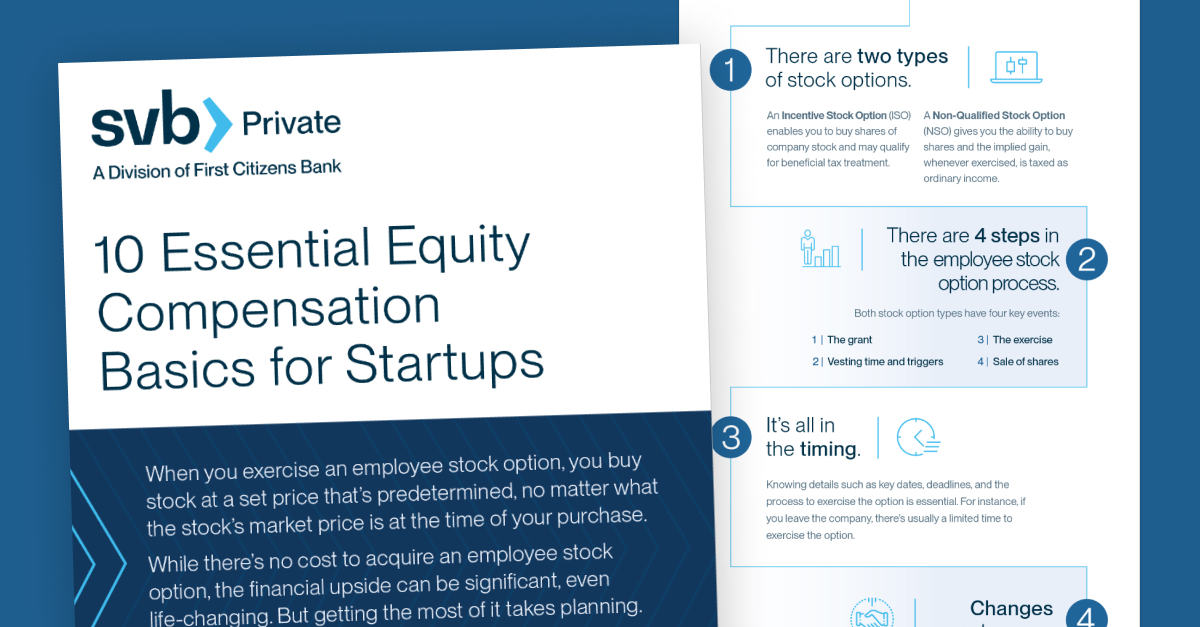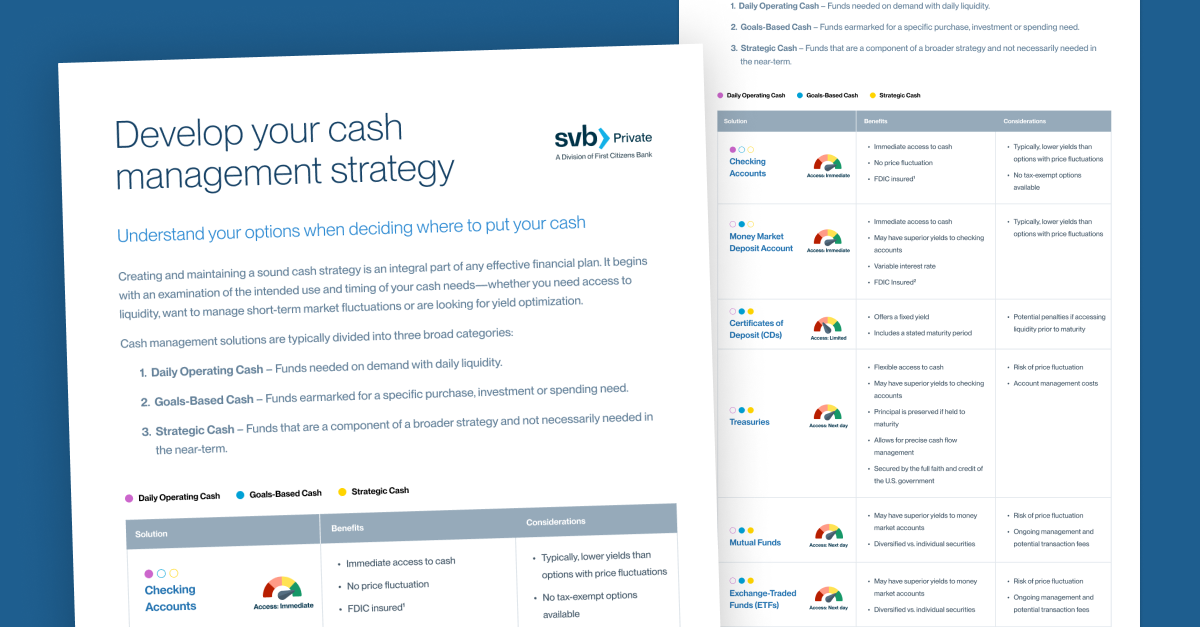We’re pleased to provide you with insights like these from Boston Private. Boston Private is now an SVB company. Together we’re well positioned to offer you the service, understanding, guidance and solutions to help you discover opportunities and build wealth – now and in the future.
The importance of fostering a relationship between technology and business leaders
Despite the fanfare around “Digital Transformation” across all industries, the real magic is how businesses are transforming by applying digital technology in a way that makes them more prepared to deliver on rising customer experience expectations. Surprisingly, it’s not about the technology. It’s about management’s vision of how to transform their practice with available technology.
Stated more clearly, Digital Transformation stems from a desire to transform the business (the practice). No business will ever be successful with an excess of idle tools: technical solutions provided by internal IT or 3rd parties that somehow became a solution in search of a problem. Instead, it’s people who will drive the change to become a digital practice:
"There is a big difference between doing digital and becoming digital," says Alicia Hatch, CMO of Deloitte Digital (#2 largest and fastest-growing digital agency network). While there are many successful examples of CDOs and companies transforming successfully to becoming digital-first businesses, the vast majority of Fortune 1000 companies are still organized in product-siloes, with legacy organizational structures and archaic technology infrastructures that inhibit their ability to pivot toward customer-centricity.
-Why are Chief Digital Officers Failing?
Often companies are solving for the digital gap by appointing heads of digital transformation or chief digital officers. While these roles can evangelize and ultimately drive implementation, what they cannot do is ensure that
- the right technology is deployed to the right people to have the greatest impact, or
- ensure that whatever tech is built (or bought) is successfully adopted.
Those challenges are on the line manager, who needs to have a strong desire to proactively manage their practice and the wherewithal and know how to make it happen with the help of technology.
The key is to deeply understand the problems that tech needs to solve and those problems are defined primarily through design of business processes that facilitate movement along journeys.
What’s a journey? Journeys are really “processes” that people must go through to accomplish something that take end-to-end consideration of all parties, processes and systems involved.
Journeys are useful because the focus is on what the “user” has to go through, not on the functional silo that enables part of it or on a singular system that facilitates it as there are many.
The “portfolio” of journeys can be managed much like a product portfolio, but instead as an experience portfolio, and aligned to your corporate objectives around differentiating capabilities based on the customers (or clients) you serve.
Key facets of the “Digitally informed” line manager

Managing a line of business is, by its nature, multi-dimensional. One has to consider the human capital strategy, sales strategy, product strategy, operations, etc. to be successful. Technology plays a role across all of these dimensions (but is not a dimension unto itself). As a result, line managers must become “digital managers” who insist on using technology to facilitate their practice where appropriate.
Design their org structure to execute on business strategy
Line managers must have a keen sense of how to apply the broader business strategy to their organizational structure, understanding why and how their structure is set up to execute and whether it needs adjustment to meet the business strategy needs.
Be clear on what processes their team executes
Line managers must have a solid appreciation for business process that can be executed efficiently and consistently – and that “everything” has a process…just that some processes are better defined and supported than others (i.e., know where chaos can be tolerated, but never tolerate it where it matters). In large part, business process is the result of “needing to do something” and usually that “something” is in the context of doing something for a client. Thus, business processes can, for the most part, be tied to customer journeys that the line manager has a stake in optimizing.
User experience
Have you ever pulled on a door handle and found that you were really mean to push it?That is the essence of user experience: providing the right “interface” to the user to make sure they understand what they are meant to do. In business, the interfaces are not always on a screen (just as the door handle is a physical “interface”) and managers must understand the things that their people and clients must interact with and whether or not the interfaces for those things are really helping (or preventing) them accomplish their end goal.
Operations
Managers must have an operational mindset… the “get things done” way of thinking that begs to have processes that are:
- Understood – clearly documented with sufficient training for staff
- Scalable – don’t require the addition of staff to handle reasonable increases in volume
- Consistent – have an expected set of outcomes and a clear way to know when an outcome is undesirable
Surprisingly, this mindset does not mean that people must robotically follow a process and relinquish creative control. Opposite from that, they exert their creativity appropriately while not wasting energy trying to figure out the basics (i.e., “reinventing the wheel”).
Data & Analytics
For line leaders, it’s not enough to want to be data driven, instead they have to dive in and own the entire supply chain of data. From business-driven questions to dashboard creation and gleaning insight, principally, they must:
- Demand that the data driving their reports is accurate, and take accountability when it isn’t
- Have defined metrics on which they measure their practice (sales, service, operational or otherwise)
- Demand access to analysis that can answer questions not provided in their reports or, better yet, develop their own analytical skills that can use available data to find the answer.
In conclusion
When a line manager looks to develop a solution to a business problem, they should always be looking for a technology-centric way of solving it, versus a human-centric approach requiring additional headcount.
To accomplish this, three things must be true:
- The manager needs to be not just comfortable, but fully committed that technology can help solve every problem they have as a default mindset (and if it can’t, then go manual).
- The business itself must set up a way that the line leaders can interact with technologists within an internal service model, much the same way that an agency or service provider would offer:
- Internal IT consultants must have relationships with the line leaders, much like an HR Business Partner does, to understand their business and its needs.
- Those IT Business Partners also coordinate across all lines of business to develop solutions that make sense for the enterprise as a whole, not one line of business at a time.
- Finally, with the counsel of their IT Business Partners, the business line leaders themselves need to accept ownership over the governance of IT priorities and recognize that they need to “vote their dollars” for their priorities by funding enhancement projects from budgets they control.
It’s no longer good enough to simply know your business, you have to know how to operate digitally and take complete ownership over the:

Shared resources like HR, Marketing, Product Management, Operations and Technology are there to help business leaders transform their practice, but the accountability of actual transformation is impossible to put on any one group.
Instead, business leaders must be willing to take on this level of extreme ownership otherwise any attempt will fail to transform their practice.














